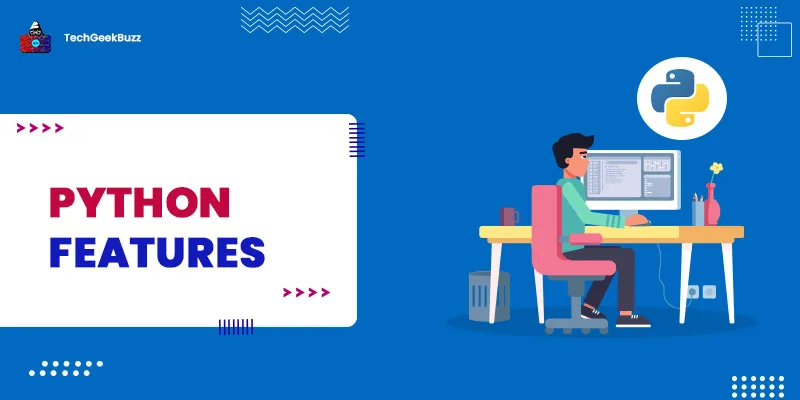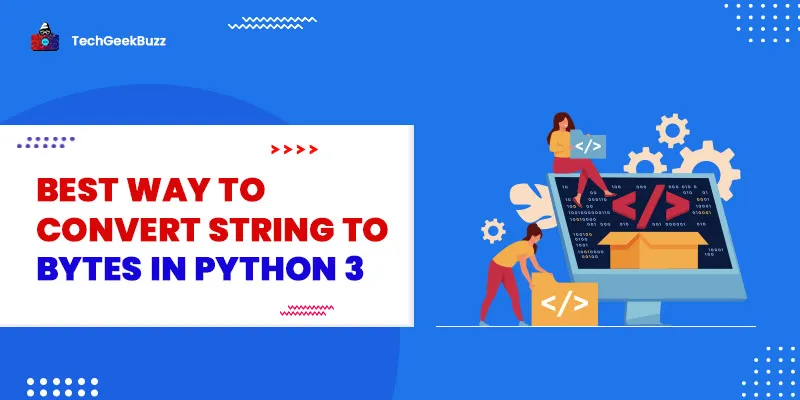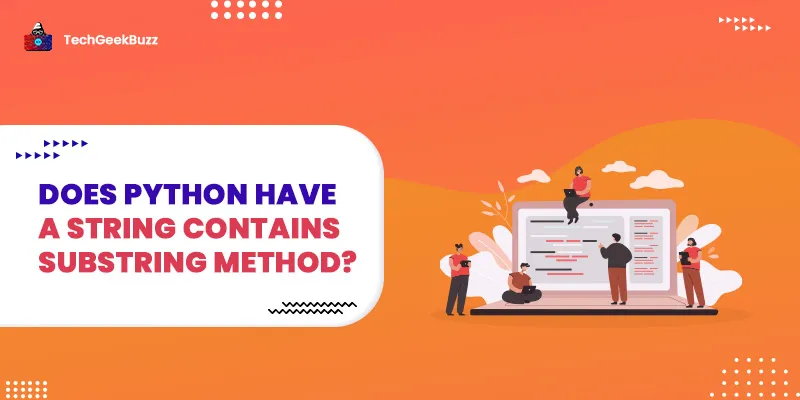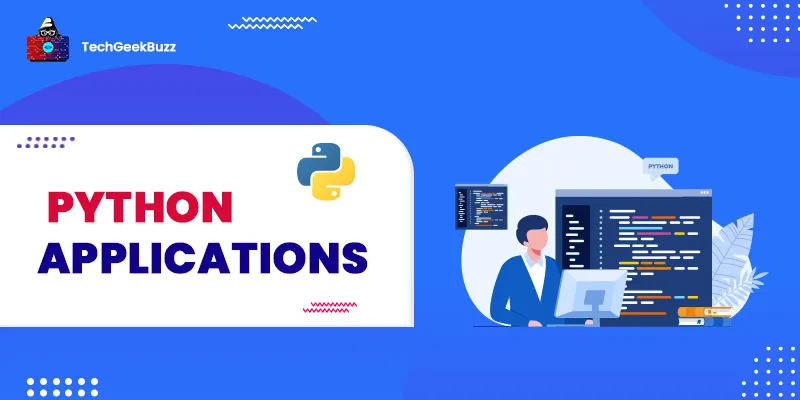Among various programming languages available out there, Python is ruling the world. According to the TIOBE Index for April 2023 , Python tops the list of popular programming languages.
Designed by Guido Van Rossum in 1991, Python is a general-purpose, high-level programming language. The language’s design philosophy emphasizes code readability by eliminating complex syntax containing semicolons and brackets.
The document Zen of Python (PEP 20) summarizes the language’s core philosophy as follows:
- Beautiful is better than ugly.
- Explicit is better than implicit.
- Simple is better than complex.
- Complex is better than complicated.
- Readability counts.
Further, Python has a less-cluttered and clean syntax containing English keywords, making it easy to learn and use. Rather than using delimiters, like semicolons and curly braces, the language uses whitespace indentation.
Besides being simple and easy, it has a wide range of applications, such as software development, app development, data analysis , data visualization, and task automation. Many companies, like Facebook, Google, Instagram, Netflix, and Spotify , use Python. Hence, it has been popular and most preferred among developers and data professionals over the past decade.
Learning Python opens up various career opportunities, as it is used in different domains and industries. If you are planning to put your foot forward in Python development, you first need to know the language’s features.
This article will walk you through some prominent features of Python.
14 Key Python Features Every Developer Should Know
Let us explore the salient features of Python in detail below.
1. Readable and Easy Syntax
The syntax complexity of a programming language plays a vital role in deciding the ease of understanding, learning, and writing code in that language. Many high-level programming languages, such as C++ , Java , JavaScript , etc., contain complex syntax and can give a hard time to a beginner while writing code.
But this is not the case with Python. It has the easiest syntax compared to other programming languages. The use of simple English keywords makes it more readable. You can write effective programs with less code. If non-programmers look at the code, they can tell what it should do.
Due to its simple syntax, many universities and schools have adopted Python as the foundational language for students. This ease and simplicity also make the language a perfect choice for writing machine learning algorithms and performing various tasks in data science.
2. Free and Open Source
Python is a free and open-source language. You can download it freely from its official website. Being an open-source language, it lets you access and download the source code. The language has a vast community of users and experts contributing their skills and knowledge to improve the source code and make it much better.
3. High-Level Programming language
It is a high-level programming language which makes it more human-friendly. High-level programming languages are close to humans, and their syntax is easy to understand and remember.
Developers can write programs independent of the computer on which they are written. Also, they do not have to worry about memory management and remembering system architecture. This Python feature makes the language more programmer-friendly.
4. Interpreted Language
Python is an interpreted language. It does not require the compilation process, like C++ and Java. Rather than converting Python code into machine code, it is converted to bytecode, which an interpreter can execute. It reads a program line by line, executes it accordingly, and does not do it in one go.
IDLE is Python’s default integrated development environment with a pre-installed interpreter. It runs Python code line by line and displays the output likewise.
5. Object-Oriented and Procedure-Oriented Language
Python is a multi-paradigm programming language supporting object-oriented programming , structured programming, functional programming, and procedural programming.
Being an object-oriented language, it supports implementing OOPs concepts like abstraction, inheritance, polymorphism, and encapsulation. These ensure data security and reusability of code. Also, OOPs is a major paradigm used in the software development industry as it helps solve real-world problems.
On the other hand, being a procedural language, it emphasizes the use of functions that ensure code reusability and modularity.
6. Easy Debugging
When we write code, there is always a chance that code contains errors and bugs. When we talk about C++ and Java, they are compiled languages and use a compiler as a translator. This makes it more difficult to debug programs written in compiled languages.
But Python is an interpreted language and uses an interpreter. The interpreter executes the code line by line, stops when it encounters an error, and displays the same on the screen. It does not execute the further core unless the error gets fixed. Hence, it becomes easy to debug the code.
7. An Extensive Standard Library
A library is a pre-written code or a collection of programs, files, and functions that can be called in a program to optimize tasks. It helps reduce coding efforts by eliminating the need to write the code from the ground up.
Python’s standard library is extensive and accessible to anyone. It comprises many diverse packages and modules, including functools, itertools, and operators. If you need to write any code that functions similarly to any of these modules, you can directly call them in your program, which eliminates writing the code for the same. This significantly reduces time and effort.
You can easily download Python libraries using an easy-to-use pip install command . These libraries are available for tasks spanning different domains, including software and web development, data visualization, data analysis, etc.
Besides the standard library, many other packages and modules are available in PyPI (Python Package Index).
8. Dynamically-Typed Language
In programming languages like Java and C++, which are statically typed languages, we need to define the data type for each variable when we declare it. But this is not the case with Python. There is no need to define the data type of any variable you use in your program; the interpreter does it for us. It decides the variable type at runtime based on the values assigned.
This Python feature makes coding easier and hassle-free but may result in runtime errors. More specifically, the language follows duck typing. This means if something looks like a duck, swims like a duck, and quacks like a duck, it is a duck.
9. Portable and Platform-Independent
Being a portable language, the Python code you write on a Windows system can run on Mac or Linux-based systems without making any code changes. The only condition is that system must have Python installed. This eliminates the need to write separate programs for different platforms.
10. Extensible and Embeddable
Python is extensible and embeddable. You can embed the Python code into C and C++ programming languages and compile the same in C and C++. Also, you can extend Python code to other languages, like C++.
11. GUI Programming Support
Apart from console base applications or programs, we can create GUI applications using Python. It provides many GUI libraries like PyQt5, Tkinter, wxPython, PySide, etc. Tkinter and PyQt5 are the most popular and widely used options.
12. Database
With Python, we can create databases using SQLite and MySQL . Python comes with the support of SQLite database.
13. Dynamic Memory Allocation
We have discussed above that the language does not require assigning the data type of variables at the time of declaration. The interpreter does it at runtime. Similarly, variables get memory allocated at runtime. This is what the dynamic memory allocation feature implies.
14. Large Community Support
Being a popular language worldwide, Python has an extensive community of expert developers and users. It serves as a place where novices and seasoned programmers can level up their knowledge and skills. If you encounter any issues while practicing Python programming, the community is always there to help you. Also, you can find vast amounts of tutorials and other learning materials.
Conclusion
These were the prominent features of Python. Learning and using this language is really fun and interesting. Being an easy-to-understand language, many coders and developers kick-start their learning journey with Python. In addition, the wide range of applications in different domains makes the language popular among several tech giants.
If you are planning to become a developer or programmer, choosing Python would be a great choice. Also, it has potential career opportunities in various fields.
People are also reading:
- Real-World Python Applications
- Best Python Bootcamp
- Best Python Certification
- Python Coding on a MacBook
- Top Programming Languages
- Best Python Libraries
- Best Python Books
- Python GUI Frameworks
- Best Python IDEs
- Best Python Interpreters




